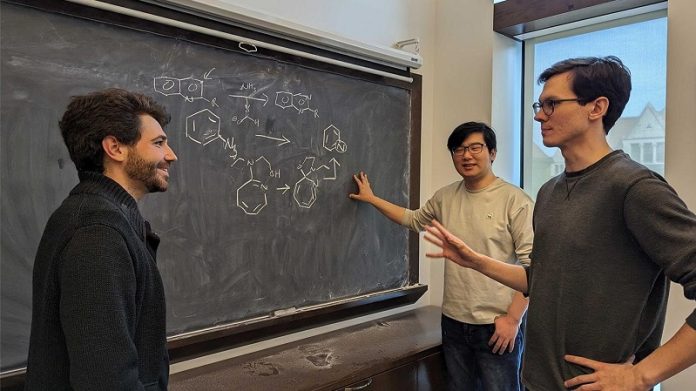
Have you ever played with building blocks?
Imagine if you could change just one block and create a whole new toy.
Well, chemists at the University of Chicago have done something a bit like that, but with molecules, and their discovery could help make new medicines much more easily!
Creating new medicines is a bit like a complex puzzle. Scientists put together a bunch of different atoms to make molecules, which can become new drugs.
Sometimes, they find that changing just one atom in a molecule can make a medicine work better or reduce side effects.
One particular swap they’ve always wanted to do is replace a carbon atom (a common building block) with a nitrogen atom (another common one, but with different properties).
Mark Levin, a chemistry professor at the University of Chicago, and his team have been working on this puzzle for a long time.
They’ve now published two studies where they show us new ways to make this atom swap. One is in the journal Science, and the other is in Nature. These studies could be a big deal for making new drugs!
Let’s break down what they did into simpler terms.
Changing the game in medicine making
In medicine-making, changing just one atom in a molecule can be like changing a single ingredient in a recipe, which can make the dish taste completely different.
For example, switching one atom for another might help a medicine reach the brain more easily or make sure it doesn’t accidentally affect the wrong part of the body. So, in the world of drug discovery, the ability to swap one atom for another is super valuable.
But here’s the tricky part: it’s really hard to do! Imagine you’ve finished building a model ship, but then you decide you want to change a piece right in the middle. You’d probably have to take apart a lot of the ship to change that one piece. That’s how it’s been for chemists—they would have to start the whole drug-making process over just to change one atom.
Levin’s team didn’t want to start from scratch every time they wanted to change an atom. They were looking for a shortcut. Their goal was to find a way to replace a carbon atom with a nitrogen atom without having to remake the whole molecule.
Two new solutions for a big problem
The team found two new ways to do this. The first method is for molecules that already have a nitrogen atom hiding somewhere in their structure. They use a special trick with a substance called ozone to open up the molecule, and then they get the new nitrogen atom to pop into the right place, kind of like helping a lost puppy find its way home.
The second method is for molecules that don’t have any nitrogen yet. This approach is about finding the exact carbon atom they want to replace, taking it out, and putting a nitrogen atom in its spot.
These new methods aren’t perfect yet, but they’re a huge step forward. It’s like moving from writing with a typewriter, where if you make a mistake you have to start over, to using a computer, where you can easily go back and make changes.
Levin compares these new techniques to typing on a computer—you can edit and move things around much more easily, which is really important when developing new drugs. You don’t always know the best way to build your molecule from the start, so being able to make changes easily is a big help.
The discoveries were partly down to luck and creativity. Sometimes, scientists see something unexpected and get an idea of how to solve a problem, and that’s exactly what happened here.
These two new methods from the University of Chicago chemists could lead to an exciting future for medicine. It’s a story of how a bit of clever thinking and a little bit of luck can open up a world of possibilities!
Follow us on Twitter for more articles about this topic.



